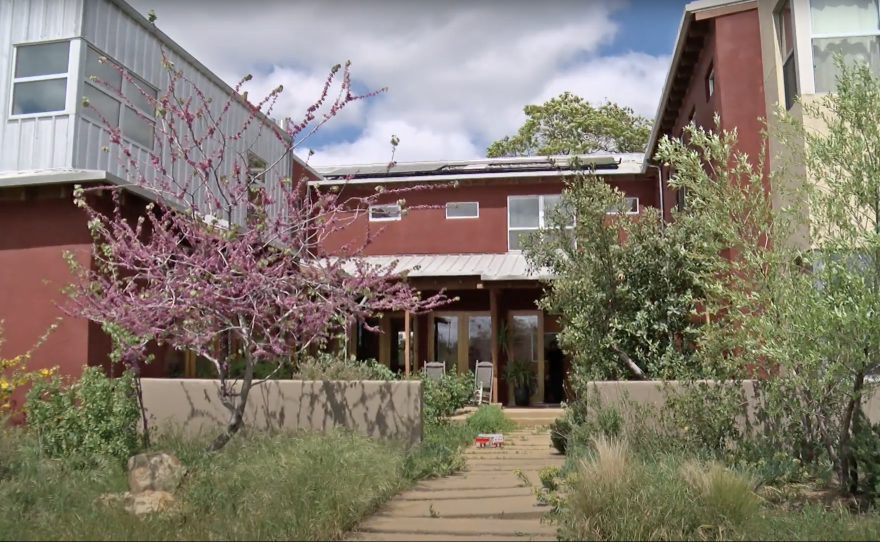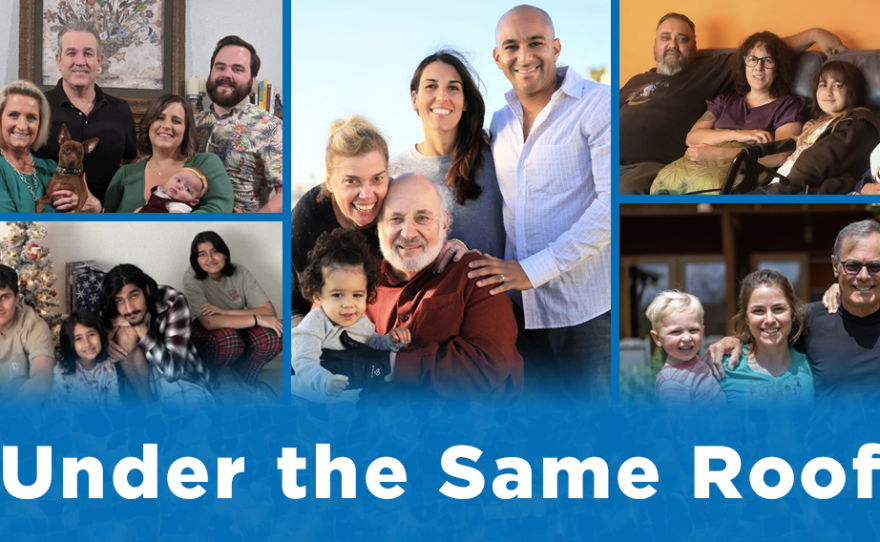San Diego is one of the top 10 cities in the country for multigenerational housing. This series tells the stories of multiple generations living under one roof.
When Jill Riggs moved into her parents’ house in Julian in 2012, it was empty. Her parents were living in the Coachella Valley, and she and her husband came to manage the family business, her parents’ vintage trailer park.
Seven years later, her parents, Frank Spevacek and Kathleen Rosenow, returned for what they thought was a temporary stay.
But Riggs had a son, Frankie, in February 2020. And then COVID-19 hit.
“It was a godsend that we were all here,” Rosenow said.
Riggs had different words to describe the late nights with her newborn during lockdown, when her parents were still making plans to build another house. Her mother, she said, was obsessed with measuring things in the house late into the night, while Riggs was counting the hours before the next nighttime feeding.
“I'm just like, if I hear that tape measure one more time!” she laughed.
Riggs never thought she’d come back to Julian or go into business with her parents, let alone live with them again. But now she is part of one of the many multigenerational households in the San Diego region. U.S. Census data show San Diego is one of the top 10 cities for multigenerational households in the country.
Multigenerational living is the norm in many cultures, but it wasn’t for Spevacek and Rosenow. Their parents lived in far-away states, and they expected the same kind of independence and distance from their daughter.
But living in the same house just seemed to work. They settled into a routine of daily meals and cocktail hours together, debating politics, gardening and jumping in the hot tub.
The pandemic slowly eased, society opened back up, but the five of them stayed under the same roof, along with two dogs, three cats, and often Frankie’s little cousin Waldo.
Rosenow loved seeing her family every day, instead of just on the holidays. She took comfort that if something ever happened as she and Spevacek aged, there would always be someone there.
“There's never a feeling of loneliness,” she said. “That's such a hard thing for people as they get older. We're not experiencing that at all.”
Spevacek liked that they got to know his daughter’s friends and felt connected to younger generations. It felt like the antithesis of his parents’ move into a retirement community.
“It makes life really interesting,” he said.
Riggs appreciated the extra sets of hands when Frankie got sick or a sudden need arose. Or when she just needed a moment.
“And you’re like, ‘Go find your grandparents!’” she laughs. “And you send them along.”
Her family is not alone in this unexpected accommodation, the number of Americans living in multigenerational households has quadrupled since the 1970s. But those living situations vary drastically.
The house designed by Spevacek and Rosenow themselves is striking, with high ceilings, a bespoke fireplace and large windows overlooking their own 12 acres of nature.

Spevacek and Rosenow added a separate small building in the yard with a private bedroom and bathroom for themselves. Though, Rosenow said “private” is a loose term — on a recent morning she was surprised by her grandsons piling into the shower with her.
They all said they’ve learned to let things go more easily and talk through conflict. They play to their strengths when dividing up tasks.
Of course, they don’t have the same space constraints of many of San Diego’s multigenerational households. And the house is paid off, so there’s less financial strain, too.
This kind of situation is ideal, according to UC San Diego sociologist Juan Pablo Pardo-Guerra. Multigenerational living, he said, leads to better life outcomes, including higher college attendance rates, more social mobility and resources and better community relationships. The family can share finances and childcare and build more capital.
Spevacek’s family is reaping these benefits with less of the costs.
In this ongoing series, KPBS will bring you stories from multigenerational households in San Diego, some that don’t have these advantages.








